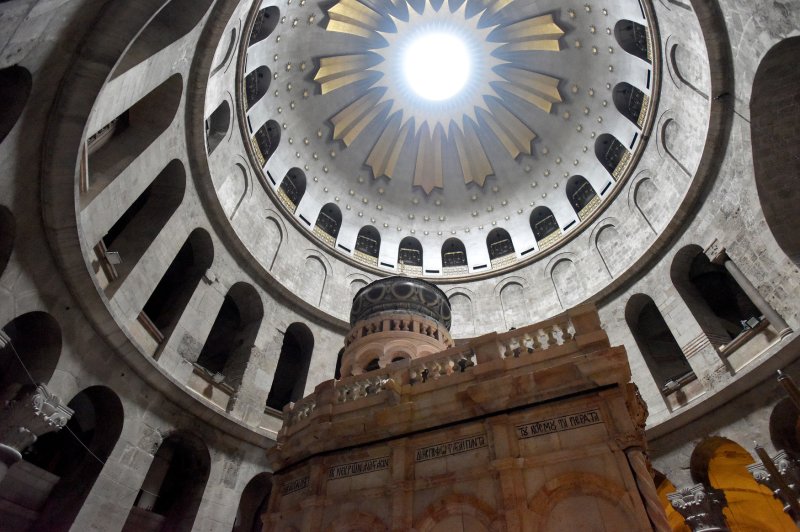March 21 (UPI) -- A Greek team announced the finish to the restoration of the tomb of Jesus, a $4 million project in Jerusalem which took nearly a year to complete.
The site is a cave where Roman Catholics and Orthodox Catholics believe Jesus was entombed and then was resurrected. It lies beneath a shrine called the Edicule, which itself is surrounded by the 12-century Church of the Holy Sepulchre in the Christian Quarter of Jerusalem's Old City. The restoration included the cleaning and reinforcing of the limestone and marble Edicule and the removal of an iron cage installed in 1947 to shore up its walls. The shrine was restored once before, in 1810 after an 1807 fire, and has not been improved since.















